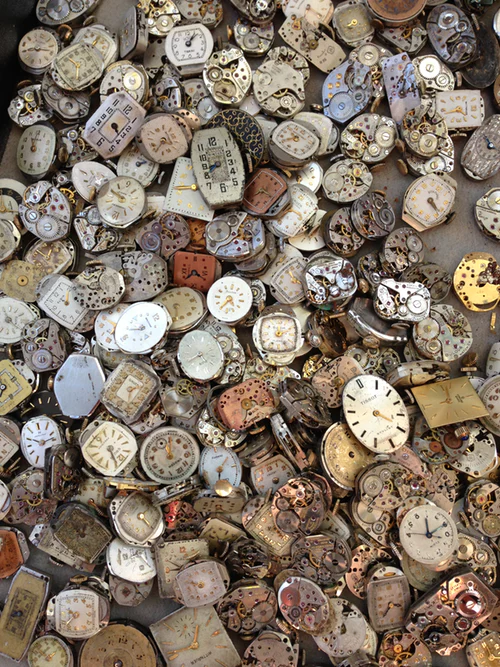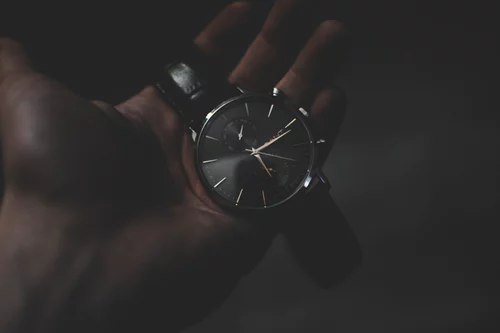Even though all watches have one functioning purpose, they are many that definitely have that other added purpose of being a status symbol. In the world of luxury items, telling time from your phone just doesn’t cut it, no matter how expensive your phone is. A tasteful, classy watch is a luxury watch states, without words, that you’ve achieved something in your life, and that the wearer maintains a distinct style that is distinguished by their attention to quality. Even if you purchase a luxury watch for what may be perceived as superficial reasons, you will begin to appreciate its inside as much as you do its outside. A good timepiece can become an heirloom passed down from generation to generation, not to mention a wonderful and meaningful present for anyone special in your life.

At the end of the day, however, many of us can’t really afford those super expensive ones, but we can still make a great impression with other choices that are elegant and highly functional in their own right.
When it’s time to purchase a watch, you might be a bit confused about the differences between a quartz, mechanic and automatic watch and how they operate. So now, you’ve landed on the right page to tell you the difference so you know what you’re shopping for a watch. Each type has its own features that we’ll tell you about now.
To begin with, a watch movement is also known as a caliber. It’s the engine of a watch that acts as the powerhouse to make the watch and its functions work. This internal mechanism inside the watch moves the hands. The movement is the most important component in a watch and that helps keep accurate time. No watch would function without a watch movement. Now that you’ve got the basic idea of what the watch movement is, it’s time to check out the different movements, starting with quartz watches:
Quartz
At one point, quartz watches revolutionized the entire watch industry with its cutting edge technology where the manual winding wasn’t needed. Unlike its predecessor, the mechanical watch, quartz made it clear that the best way for a watch to work was through a small crystal, a battery and a few tiny motors.

On a quartz watch, there’s a tiny quartz crystal, cut out in the shape of a tuning fork. The Beta 1 prototype was produced in 1967 by the Swiss Centre Electronique Horloge, and by 1969, Seiko introduced the Astron, the first commercially-available quartz watch. A quartz watch can surpass its more luxurious rivals in its accuracy of telling time. Alongside of this, it requires very little maintenance except for an occasional battery change.
The easy way to differentiate a quartz from a mechanical movement is by watching the second hand. A quartz watch’s second hand has a ticking motion moving once per second, while mechanical watches have more of a smooth, sweeping seconds motion. This feature is one of the most important distinguishing factors of quartz watches.
You can learn a lot more about quartz watches when you read this and find out the best ones on the market to buy. Quartz watches are also made using fewer components, so they tend to be much lighter and slimmer than their mechanical counterparts. It’s not difficult to find light, and trendy designs when looking through quartz timepieces.
Mechanical
Despite the extensive change in technology, the overall makeup of the mechanical watches hasn’t changed much. Many luxury watches fall into this category due to their excellent craftsmanship among other features. However, it’s the battery that makes for the biggest distinction between mechanical and quartz watches.

Mechanical watches are known to be powered by gears and springs, while Quartz watches are powered by a battery. As mentioned, the mechanical watch’s second hand has almost continuous motion, while that of a quartz watch ticks once per second. The core of a mechanical watch is its main spring. This is a thin piece of metal, around 14 inches long, or longer which is curled into a spiral. The mainspring tension increases as the watch is wound, and the spiral gets tighter. As the watch runs, the tension is released, and the energy is transferred into the movement which loosens the spiral.
Mechanical watches are based on manual winding which is the oldest type of watch movement. These timepieces are very much loved for their beautiful display of the watch movement, which can usually be seen through the glass case.
Automatic
These watches are known to be self-winding where automatic movements occur via the natural motion of the wearer’s wrist. There’s a popular belief that these watches never need to be wound, but that’s a misconception. If you don’t wear it enough you’ll experience a shorter power reserve when you remove the watch. So, when you first buy one, wind the crown about 30 or 40 times which is usually enough to completely wind the mainspring on most automatic watches. Once you wind the mainspring fully, and the watch is worn on an active wrist, the rotor will continuously wind the mainspring. This helps top off the watch’s power reserve.

These watches were very popular because you didn’t have to worry about winding the watch daily to ensure constant operation. Automatic watches may be categorized as mechanical watches, even though they don’t need constant manual winding. Most watches manufactured today have automatic movements. As long as the watch is on an active wrist, it won’t need to be wound up manually, nor does it require any electrical power. But an automatic watch will need to be worn almost every day in order to keep accurate time.
If you want to keep the watch stored and the movement ticking, keep the watch on a watch winder. The automatic watch component parts are of very high quality, which is why many luxury watches might be of this sort.
It’s a matter of preference
In all the three types, there exists expensive, brand watches as well as less expensive and more mainstream designs. The best watch for you will depend completely on your budget, lifestyle and your personal taste. And while there are the different movements that were talked about, there is no best movement. With so many choices, the perfect watch is out there for you.










